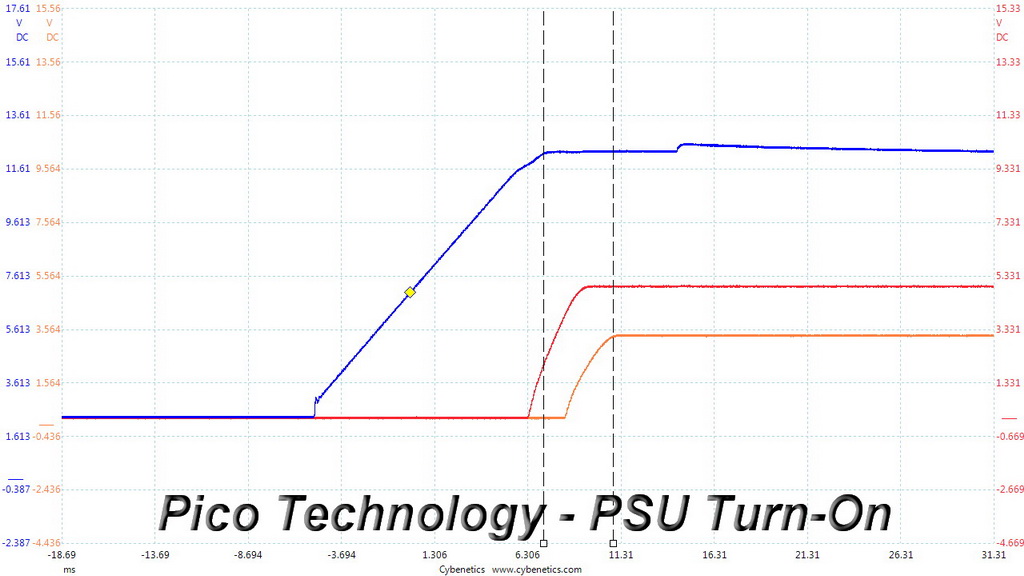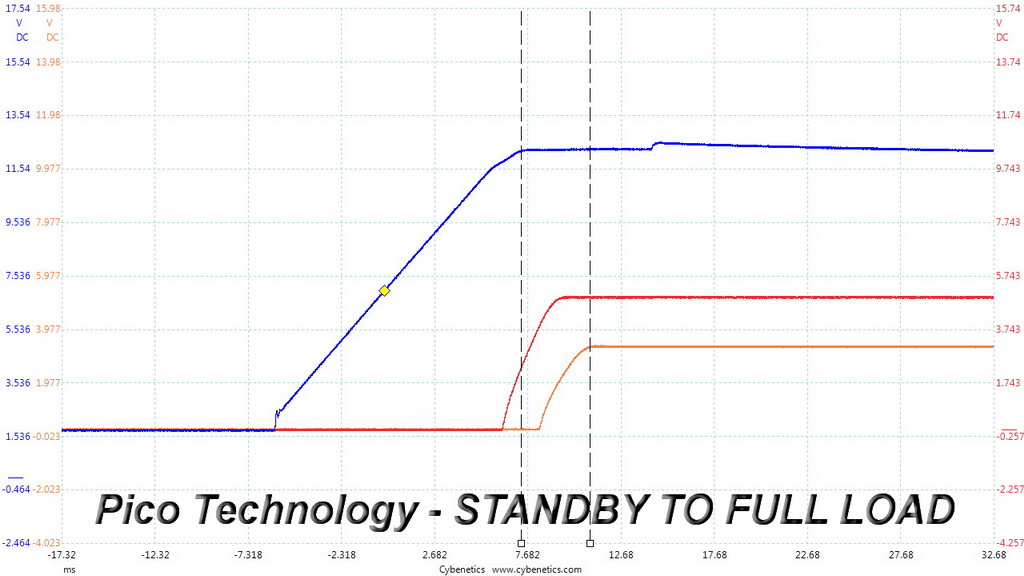PC Power & Cooling Silencer 1050W PSU Review: Affordable Yet Powerful
Why you can trust Tom's Hardware
Protection Features & DC Power Sequencing
Protection Features
Check out our PSUs 101 article to learn more about PSU protection features.
Our protection features evaluation methodology is described in detail here.
| Protection Features | |
|---|---|
| OCP | 12V: 101.8A (116.34%), 11.989V 5V: 36A (144%), 5.019V 3.3V: 33.7A (134.8%), 3.302V 5VSB: 5.6A (186.67%), 4.852V |
| OPP | 1453.3W (138.41%) |
| OTP | ✗ (>230°C @ 12V heat sink) |
| SCP | 12V: ✓ 5V: ✓ 3.3V: ✓ 5VSB: ✓ -12V: ✓ |
| PWR_OK | Does not function correctly |
| NLO | ✓ |
| SIP | Surge: MOV Inrush: NTC thermistor & bypass relay |
OCP on the +12V rail is configured lower than expected, while it's high on the 5V and 5VSB rails. On the 3.3V rail, OCP is set close to 130%, which we consider to be a good setting.
We would like to see OPP's triggering point at around 130%, especially since over-temperature protection is either absent or configured incorrectly. On Riotoro's Builder Edition 1200W, which uses the exact same platform, OTP is triggered at 185°C on the +12V heat sinks. On this unit, however, we hit 230°C and it continued working.
Short circuit protection is present on every rail, and High Power decided to use an NTC thermistor for suppressing large inrush currents. It's unfortunate that the manufacturer didn't tune the power-good signal properly, leaving it inaccurate.
DC Power Sequencing
According to Intel’s most recent Power Supply Design Guide (revision 1.4), the +12V and 5V voltages must be equal or greater than the 3.3V rail’s output during power-up and normal operation.
For our first measurement, we turn the PSU off and switch it back on without any load. In the second test, we set the PSU to standby mode, dial in a full load, and start the PSU. In the last test, while the PSU is completely switched off, we dial in a full load before restoring power.
Get Tom's Hardware's best news and in-depth reviews, straight to your inbox.



The 3.3V rail is lower than the 12V and 5V rails in every case. This is what the new ATX spec requires, so we are satisfied as well.
MORE: Best Power Supplies
MORE: How We Test Power Supplies
MORE: All Power Supply Content
Current page: Protection Features & DC Power Sequencing
Prev Page Efficiency, Temperature & Noise Next Page Cross-Load Tests & Infrared Images
Aris Mpitziopoulos is a contributing editor at Tom's Hardware, covering PSUs.